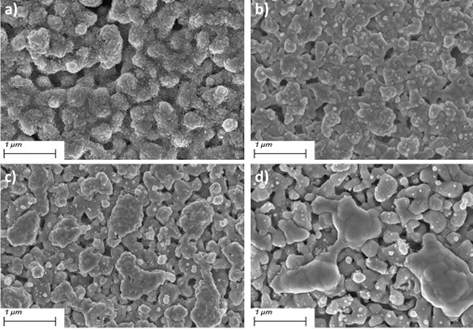Enhanced mechanical stability of Ni-YSZ scaffold demonstrated by nanoindentation and Electrochemical Impedance Spectroscopy

The electrochemical performance of Ni-YSZ SOFC anodes can quickly degrade during redox cycling. Mechanical damage at interfaces significantly decreases the number of active triple phase boundaries. This study firstly focuses on the sintering temperature impact on YSZ scaffold mechanical properties. The YSZ scaffold sintered at 1200 °C exhibited 56% porosity, 28.3 GPa elastic modulus and 0.97 GPa hardness and was selected for further redox cycling study. The Ni infiltrated YSZ scaffold operated at 550 °C had an initial stabilized polarisation resistance equal to 0.62 Ω cm2 and only degraded to 2.85 Ω cm2 after 15 redox cycles. The active triple phase boundary density was evaluated by FIB-SEM tomography, and degraded from 28.54 μm−2 to 19.36 μm−2. The YSZ scaffold structure was robust after 15 redox cycles, as there was no observation of the framework fracturing in both SEM and FIB-SEM images, which indicated that the mechanical stability of YSZ scaffold improves the anode stability during redox cycling. Nonetheless, Ni agglomeration could not be prevented within Ni-YSZ scaffolds and this needs further consideration.